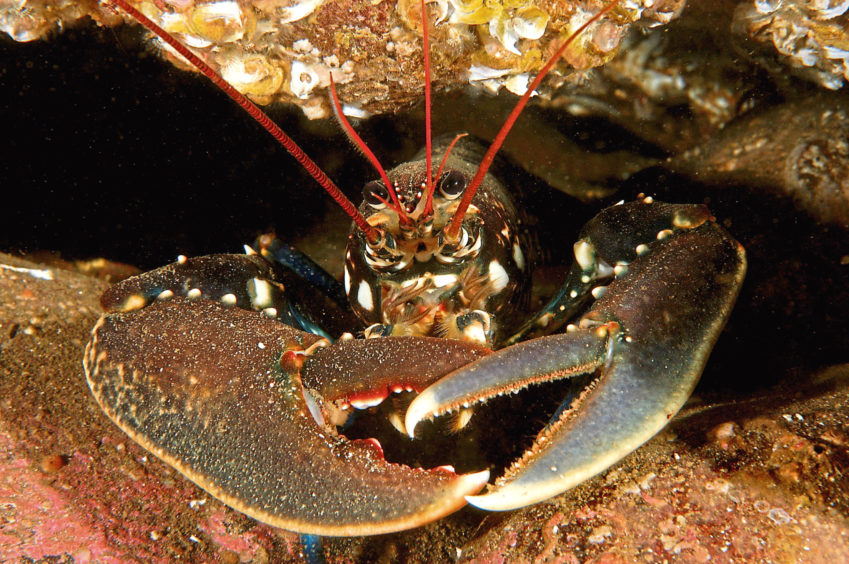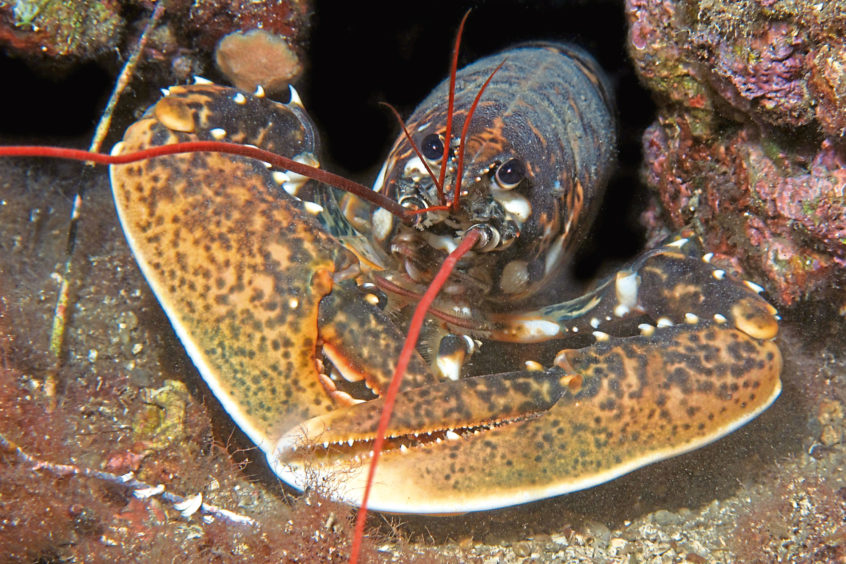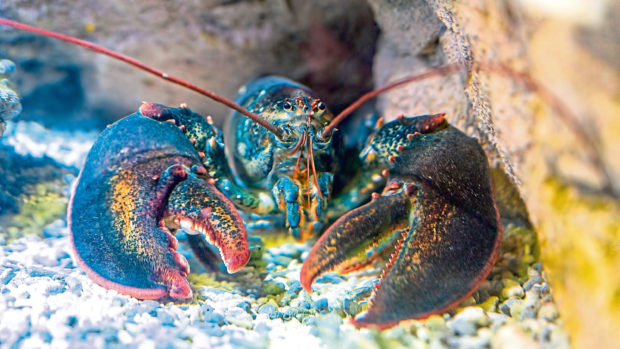Lobsters hunt mainly nocturnally, and their diet comprises mostly of crabs, molluscs, urchins, starfish, and marine worms, but may also include some fish, algae and zooplankton.
I had never been attacked by a lobster before, but when it comes to nature watching, there is always a first time for everything.

Snorkelling by the rocky foreshore at Elie in Fife with the tide at its lowest ebb, I happened upon this lobster in a shallow lagoon.
The tetchy crustacean had been inadvertently cornered and it had nowhere to go other than to charge straight at me, waving its fearsome pincers in the process. However, in reality this aggressive behaviour was all bluster and threat and I was in little danger of being nipped.
As the lobster neared my facemask, it gave a quick side-step, enabling the creature to scuttle past me and flee into the safety of deeper water.
It was a thrilling encounter and just one of many marvellous sights I had experienced over the previous hour. This little lagoon, bounded by rocks on all sides, was a treasure trove of wildlife surprises. The water was crystal clear and seaweeds of all shapes and colours abounded on the seabed and in rocky clefts.
It was an incredible underwater garden and the sheer variety of seaweeds left me spellbound. We tend to think of seaweeds as being brown or dull green, but here there were bright limey-green sea lettuces, the striking red hues of dulse, and a host of other colourful types.

This lagoon was as vibrant as any wildflower meadow, and in among the seaweed fronds, juvenile saithe and cod darted. Seaweeds are algae – simple and relatively primitive plants – and they play a crucial role in the marine ecosystem, releasing oxygen through photosynthesis, as well as providing shelter for a multitude of creatures.
I rested my hand momentarily on the soft bottom, only for me to feel a large jolt, followed by an explosion of sand as a large flounder shot away. It was a disconcerting experience to have accidently touched this flatfish, but such was its superb camouflage, I had no inkling it was even there.
Shortly afterwards I spotted another flounder, which also displayed its camouflage prowess as it moved slowly over the seabed. Sometimes the fish almost totally disappeared from view as it merged seamlessly with the bottom, before its subtle form reappeared once more as it continued on its way. For me, this flounder, and its capacity to blend with its environment, encapsulated the very essence of nature and why it is so inspiring.
There were other fish about too, including attractive two-spotted gobies, which often hung motionless in the water column, as well as fifteen-spined sticklebacks with their long and elegant bodies. Hermit crabs were also abundant, scurrying along the bottom in their requisitioned whelk shells.
After a while, the cold got the better of me and I hauled myself out of the water, enthralled at the marine riches found within this paradise lagoon.










